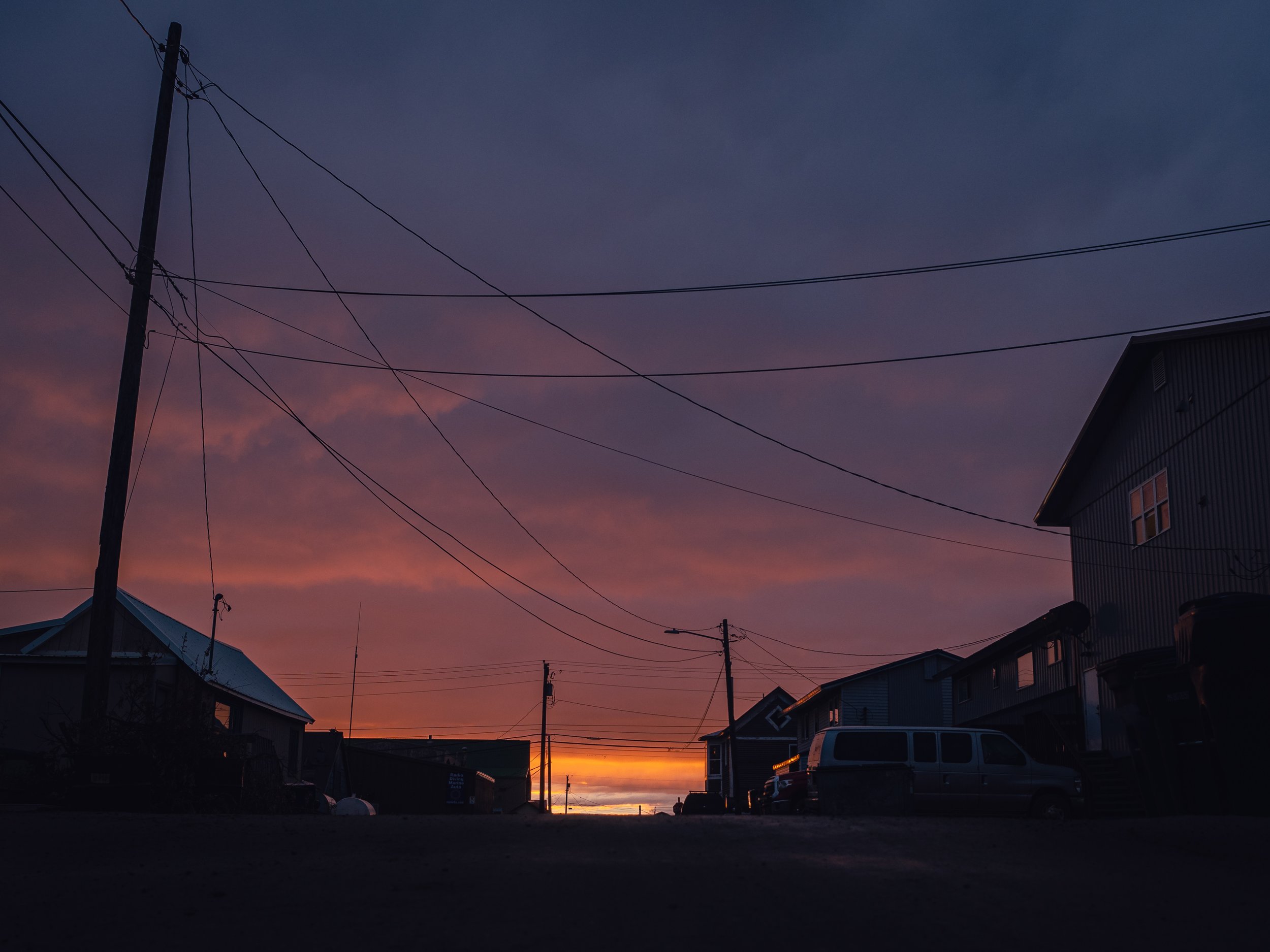Bikepacking Nome’s Insular Road System, Alaska
Taking advantage of Alaska Airline’s sports equipment policy (where bike bags or bike boxes travel for the same cost as normal checked luggage), we booked tickets to Nome, Alaska for September to explore the town, see the tundra turning fall colors, and bike some of the insular roads originating in Nome and traversing in a few different cardinal directions.
Most people know Nome, Alaska as the most famous gold rush town in Alaska—home of the last great gold stampede in the history of the American West. In the early 1900s, Nome drew people to its shores from all over the world. Nome is also well known as the finish of the yearly Iditarod Trail Sled Dog Race in March.
You can’t drive to Nome, but once you arrive three gravel highways, each around 75 miles long, showcase dramatic and very different landscape. They wind through a wilderness of tundra, mountains, coastline, rivers, and valleys littered with abandoned gold dredges and railroads.
We touched down in Nome, assembled our bicycles in a hotel room at the Dredge 7 Inn (an homage to the gold rush history in the area), and figured out a place to store our bike bags during the week we’d be biking and camping.
Nome gifted us a beautiful sunset on our first night in town. We had met up with a friend of a friend, Myra, to borrow bear spray for our trip, since you can’t fly on commercial airlines with the spray. We had just consumed an enormous pizza and beer at Airport Pizza- famous for delivering pizzas via bush plane to nearby villages- and the town was just illuminated!
The next morning the sun we loaded up on salmonberry pastries from Pingo’s Bakery, and started pedaling.
If you know me, you know my obsession with muskoxen. This obsession started years back in Florida when I read “Arctic Dreams” by Barry Lopez, and it hasn’t let up. I’ve visited the muskox farm in Palmer, Alaska and the Large Animal Research Station in Fairbanks, Alaska, but had never seen muskoxen in the wild into a mere 45 minutes of biking in Nome. We were graced with a small herd stoically perched on a hilltop outside of town, and got to marvel at their peaceful demeanor from a distance.
Along the Kougarok Road, the tundra was popping with colors and the gravel riding was super enjoyable. Salmon Lake Campground administered by the Bureau of Land Management was one of the highlights of the trip- a beautiful spot full of wild lingonberries and blueberries to pick, and soft hillsides for taking a post-ride nap.
One of our core destinations was Pilgrim Hot Springs, and the steamy pools were such a treat after a couple cold, windy, and wet days (including the final stretch of road that had a puddle so deep it almost swallowed Sagar whole!) We rented a campsite near the springs and milked our time there, soaking three different times before we pedaled onward almost 24 hours later. The infrastructure was so well thought out, with a warm changing room for the hot springs, and a brand new outhouse surrounded by scenic fall colors.
In typical small town fashion, we ran into Myra again. Myra and the adorable tundra rats Nizki and Nils were renting a cabin at the hot springs that evening with her family, so we got an official introduction and some belly scratches.
Then there was a bit of Type 2 fun for a few days in the blowing wind, cold rain, and muddy slow roads where I took zero photos. You’ll just have to trust me that it happened.
We made it back to Nome to do a little exploring around town, including still operational gold dredges and a cookie recipe on someone’s gravestone (what an awesome legacy to pass on!). We had likely the best beef bulgogi either of us have ever eaten at Bering Sea Bar and Grill.
We took our bikes apart and repacked them into their bags for a flight home the next day, but our trip was truly completed by a beautiful rainbow over the burled arch that marks the end point of the Iditarod dogsled race.



























